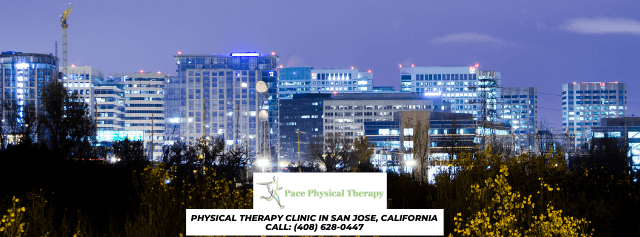Is It Better To Rest Or Exercise With Sciatica?

Back pain can be a real nuisance. Once your back pain radiates down your back and leg, it can potentially disrupt your sleep, work, exercise, and other normal activities. However, that pain can be particularly worrisome and have a real impact on your life as it radiates into your back and leg, known as sciatica.
Sciatica is relatively common – about four out of ten people will experience it at some point in their lives. Here’s what you need to know about that pain, including where it comes from and what you can do to ease it.
How to deal with sciatic pain
For many, sciatica responds well to self-care. Relax for a few days after the flare-up begins, but don’t wait too long before the activity begins again. In fact, long periods of inactivity will make your symptoms worse. Applying hot or cold packs to the lower back may provide temporary relief. You can also try stretching to help relieve sciatic pain.
Over-the-counter medications, such as aspirin or ibuprofen (Advil), may help reduce inflammation, swelling, and relieve some of your pain.
If your symptoms are severe and home remedies do not reduce your pain or if your pain is getting worse, see your doctor. They may prescribe drugs to relieve your symptoms, such as:
- anti-inflammatories
- muscle relaxers if spasms are present
- tricyclic antidepressants
- antiseizure medications
- narcotics in severe cases
Your doctor may also suggest that you take part in physical therapy after your symptoms improve. Physical therapy may help prevent future flare-ups by strengthening your core and back muscles.
Your doctor may also suggest steroid injections. When injected into the area surrounding the affected nerve, steroids may reduce inflammation and nerve pressure. You can only receive a limited number of steroid injections, however, as there is a risk of serious side effects.
Surgery may be recommended as a last resort if your pain has not responded to other treatments. It may also be an option if your sciatica causes a loss of control of the intestine or bladder.
Lifestyle changes
There are some things you can do to avoid future sciatica flare-ups:
- Exercise regularly to keep your back strong.
- Keep a good posture when sitting.
- Do not bend over to lift heavy objects. Instead of that, squat down to pick things up.
- Practice good posture when you’re standing for a long time, and wear supportive shoes.
- Keep your diet healthy. Obesity and diabetes are a risk factor for sciatica.
How long does sciatica last in pregnancy?
The 2008 review estimates that between 50 and 80 percent of women experience lower back pain during pregnancy, but it is highly unlikely to be sciatica.
Occasionally, the position of your baby may add pressure to the sciatic nerve, leading to sciatica. Depending on whether your child’s position changes, the pain may last for the rest of your pregnancy, come and go, or disappear. It should be fully resolved after your baby is born.
In pregnancy, sciatica does not indicate any problems other than pain and discomfort for the mother. Prenatal massage or prenatal yoga may help to relieve some of your discomfort. You may also try one of these other drug-free treatments for sciatica during pregnancy.
Are You Looking for Relief From Back and Sciatica?
Pace Physical Therapy in San Jose, California specializes in back pain and sciatica relief and recovery therapies. We pride ourselves on offering the best possible physical therapy available and going above and beyond for our patients. Our highly experienced physical therapist will work with you to improve your function and relieve your pain. We start by assessing the body as a whole. Oftentimes the cause of pain or an injury extends far beyond just the body part or muscle hurting. Without taking a comprehensive look at your entire self, we would be doing you a disservice in fully helping you heal and preventing future limitations. We then move on to fixing your areas of limitation. Not all diagnoses are created equal. One person with low back pain may have completely different limitations than the next person. Your recovery program needs to be specific to what YOUR body needs and not just the typical exercise program that you can find online to and-aid the real issue. Just because your pain decreases or you can walk longer doesn’t mean that it is enough to get you functioning at the level you want to be. While this often signifies the end of care at your typical PT clinic we don’t stop providing guidance until we help you successfully meet every goal you set for yourself with us on day one. Contact us today to schedule your appointment!


